Midweek Review
Possible link between TID head’s arrest and Easter Sunday massacre baffles retired DIG
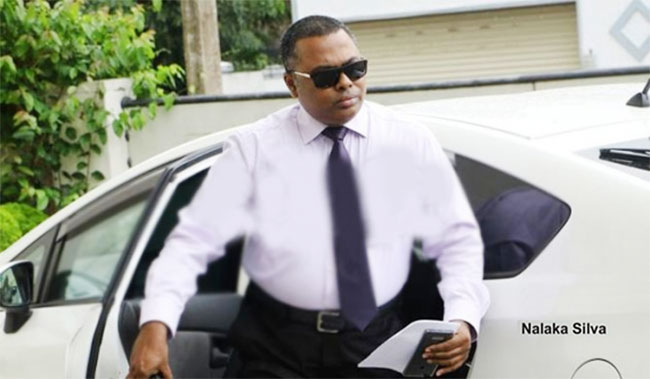
Retired DIG Priyantha Jayakody, one-time police spokesman, last Saturday (07) advised the police on how to deal with the current wave of protests. Jayakody addressed the media in the wake of President Gotabaya Rajapaksa declaring a State of Emergency following police crackdown on protests near the Parliament. The retired top cop urged his former colleagues not to give into illegal orders, under any circumstances. Jayakody is the first retired top cop to declare his support for the ongoing countrywide campaign for political reforms.
By Shamindra Ferdinando
Actor Jehan Appuhamy carried a life-sized cross on his shoulder from Katuwapitiya, in the Katana electorate, to the entrance of the President’s Office (Old Parliament), Galle Face, where a high profile ‘Go Gota Home’ campaign was underway.
The three-day trek began at the St. Sebastian Church premises, on April 19, where exactly three years ago Achchi Muhammadu Muhammadu Hasthun detonated his suicide device, killing over 100. Hasthun is widely believed to be one of the bomb makers, responsible for six suicide blasts, in the space of 20 minutes, beginning at 8.45 am on that particular day. The first detonation occurred at the St. Anthony’s Shrine, Colombo, Kochchikade, at 8.45 am. Other blasts ripped through Kingsbury, Colombo, at 8.47 am, St. Sebastian’s Church, Katuwapitiya, also at 8.47, Shangri-La, Colombo at 8.54, Cinnamon Grand, Colombo at 9 and Zion Church, Batticaloa at 9.05.
In addition to those planned blasts, there were two explosions – one at the Tropical Inn Guest House, Dehiwela, where one terrorist triggered his explosive device, and the last blast at Dematagoda, where Fatima Ibrahim, the wife of Inshaf Ibrahim (the Cinnamon Grand bomber), blew herself up, killing three police commandos. The blast also claimed the lives of her three young sons and her unborn child.
Actor Appuhamy’s endeavor received the blessings of the Catholic Church, campaigning for justice. The Catholic Bishops’ Conference has repeatedly demanded that the perpetrators of the Easter Sunday massacre, as well as those who failed to thwart the conspiracy, due to sheer negligence, or some other reasons, be punished, regardless of their standing in the society.
Appuhamy completed a 25-mile long journey, on April 21, on the 13th day of the ‘Go Gota Home’ campaign. A group of Catholics joined a protest launched opposite Temple Trees, three days later, demanding justice for the Easter Sunday carnage. The Catholic Bishops’ Conference members, and the Archbishop of Colombo, Rt. Rev. Malcolm Cardinal Ranjith, has pledged their support for the ongoing campaign, demanding the resignation of President Gotabaya Rajapaksa and the entire Cabinet-of-Ministers, including Prime Minister Mahinda Rajapaksa.
Quite a number of Catholics displayed placards, demanding justice for the Easter Sunday victims, an issue that has sharply divided the country, experiencing the worst-ever post- independence economic-political and social crisis.
Retired Deputy Inspector General (DIG) of Police, Priyantha Jayakody, in an open letter, addressed to Defence Secretary, retired Gen. Kamal Gunaratne, published in Annidda, in its May Day edition, has questioned the failure on the part of the incumbent dispensation to bring the perpetrators of the Easter Sunday massacre to justice. Jayakody also queried the inordinate delay in completing the high profile investigations, launched during the yahapalana administration, into the alleged attempts to assassinate the then President Maithripala Sirisena and Gotabaya Rajapaksa, the incumbent President.
The current dispensation couldn’t absolve itself of the responsibility for not adequately addressing the grievances of the Catholic Church, Jayakody told The Island. It would be a grave mistake on the government’s part to believe the issues, at hand, would be forgotten in a couple of years, therefore the current protests could be ignored. Jayakody, who had served the Police Department for almost 40 years, retired in late April 2021.
Namal Kumara affair
 Ex-DIG Jayakody asserted that the arrest of DIG Nalaka Silva, the head of the Terrorist Investigation Division (TID) on Oct 25, 2018, over his alleged involvement in an attempt to assassinate President Maithripala Sirisena and incumbent President Gotabaya Rajapaksa (then an ordinary citizen) may have facilitated the Easter Sunday suicide mission. Declaring that at the time of Silva’s arrest, the officer had been tracking the would-be Shangri-La bomber, and the leader of the suicide squad, Zahran Hashim, Jayakody questioned whether the investigator was falsely implicated in an alleged assassination plot to clear the way for the dastardly suicide attacks.
Ex-DIG Jayakody asserted that the arrest of DIG Nalaka Silva, the head of the Terrorist Investigation Division (TID) on Oct 25, 2018, over his alleged involvement in an attempt to assassinate President Maithripala Sirisena and incumbent President Gotabaya Rajapaksa (then an ordinary citizen) may have facilitated the Easter Sunday suicide mission. Declaring that at the time of Silva’s arrest, the officer had been tracking the would-be Shangri-La bomber, and the leader of the suicide squad, Zahran Hashim, Jayakody questioned whether the investigator was falsely implicated in an alleged assassination plot to clear the way for the dastardly suicide attacks.
Jayakody emphasized that the conspirators had intervened when the investigation reached a crucial stage. Did the government pay sufficient attention to the unwarranted delay at the Attorney General’s Department, in respect of its failure to deal with Zahran Hashim’s file? The National Catholic Committee for Justice, in a missive, dated July 12, 2021, addressed to President Goabaya Rajapaksa, referred to the conduct of the Attorney General’s Department. The Committee pointed out to the President, the PCoI (Presidential Commission of Inquiry) recommendation to the Public Service Commission (PSC) that disciplinary action be taken against State Counsel Malik Azees and Deputy Solicitor General Azad Navavi (PCoI Final Report, Vol 01, p 329).
The Criminal Investigation Department (CID) arrested Silva after having questioned him over a period of five days. At the time of his arrest, Silva had been suspended on the instructions issued by the National Police Commission (NPC).
Jayakody pointed out how within 24 hours after the TID Chief’s arrest, President Maithripala Sirisena sacked the Cabinet-of-Ministers, including Prime Minister Ranil Wickremesinghe. In spite of Mahinda Rajapaksa being sworn in as the Prime Minister, he couldn’t prove a simple majority in Parliament. A disappointed President Sirisena had no option but to dissolve Parliament, on Nov 09, 2018, and set January 05, 2019 as date for parliamentary election. But, the Supreme Court intervention restored Ranil Wickremesinghe’s premiership. Thus President Sirisena’s plan for January 05, poll was thwarted; thereby the stage was set for scheduled presidential election.
According to Jayakody, the arrest of the TID Chief, over alleged assassination plots, automatically crippled the unit. Those who had been attached to the TID were looked down, both by other police officers and men, as well as the public.
The retired top cop questioned the role played by the media, particularly the television channels, in propagating claims made by police informant Namal Kumara, as regards alleged plots to assassinate President Sirisena and incumbent President Gotabaya Rajapaksa. Pujith Jayasundera, who had served as the yahapalana IGP, is on record as having told the PCoI that Namal Kumara was paid by the Presidential Secretariat. Jayasundera quoted Dr. Saman Kithalawarachchi, the then Chairman of the Presidential Narcotics Bureau, as having told him that Namal Kumara served as a lecturer and was paid by the Presidential Secretariat.
Jayakody, in his open letter to Gen. Gunaratn, asked for the status of the investigation launched, following Namal Kumara’s unprecedented claims. “The people have a right to know. The government, under siege over the economic fallout, should come clean,” Jayakody stressed, adding that the ongoing countrywide protests reflected the crisis the country is in today.
Key issues
The Police Department owed an explanation to the public regarding the status of the investigation into the disgraced TID Chief’s alleged involvement in planned political assassinations. DIG Jayakody said that the incumbent dispensation, having repeatedly assured justice for the Easter Sunday victims, was yet to bring a critically important investigation into the Namal Kumara affair, to a successful conclusion. The need for a thorough investigation into the constitutional coup, perpetrated by President Maithripala Sirisena immediately after DIG Silva’s arrest, cannot be ignored. Would Zahran Hashim have gone ahead with the attacks if the constitutional coup succeeded? DIG Jayakody raised the following unresolved accusations leveled by Namal Kunara:
* DIG Silva dispatched a police hit squad, that had been assigned the task of carrying out VIP assassination, to Batticaloa
* DIG Silva sought special weapons used by snipers
* DIG Silva conspired with the then Prime Minister Ranil Wickremesinghe
* Involvement of Thushara Peiris, a person living overseas, in the assassination conspiracy
*Conspiracy to involve ‘Makandure Madush’ in the conspiracy
Suspected drug baron, Samarasinghe Arachchige Madush Lakshitha, alias ‘Makandure Madush,’ was shot dead in the early hours of Oct 21, 2020. Madush was killed, under controversial circumstances, while being in police custody. At the time of the incident, Madush had been in the custody of the Colombo Crime Division (CCD). The police claimed that Madush received gunshot injuries at the Lakshitha Sevana apartment complex at Applewatta, in Maligawatta. Madush was brought to Colombo on May 05, 2019, from Dubai, where he was arrested on February 05, 2019.
Jayakody questioned the rationale in Namal Kumara’s accusations, TID Chief’s arrest and delivering a crippling blow to investigations into Zahran Hashim’s outfit. Finally, the wartime Defence Secretary Gotabaya Rajapaksa, who had been the alleged target of a police assassination attempt, won an opportunity to contest the 2019 presidential election, on the SLPP ticket. Gotabaya Rajapaksa received the mandate of 6.9 mn votes whereas the other claimed target, Maithripala Sirisena, in his capacity as the SLFP leader, contested the 2020 General Election. Sirisena re-entered Parliament having contested the Polonnaruwa electoral district. The SLFP group, in the current Parliament, comprised 14 lawmakers, including one National List MP. Except for Angajan Ramanathan, elected on the SLFP ticket (Jaffna District), the remaining 13 entered Parliament on the SLPP ticket.
Ex-DIG Jayakody said that in the wake of the SLPP victory, they expected rapid progress, not only in the Easter Sunday massacre probe, but also investigations into the Namal Kumara affair. Jayakody compared the investigations into the Easter Sunday attacks, and the Namal Kumara affair, with that of the 1962 coup attempt meant to remove the then Premier Sirimavo Bandaranaike from power. Jayakody recalled how top military personnel, who had been accused of the bid to assassinate Premier Bandaranaike, were dealt with the following investigations. Unfortunately, investigations into Namal Kumara’s disclosure hadn’t been completed, even over three and half years after the arrest of TID Chief.
In his open letter, Jayakody posed the following questions to Gen. Gunaratne: (i) Would you disclose the current status of the investigations into claims made by Namal Kumara (ii) Would you explain why cases hadn’t been filed in court against ex-DIG Nalaka Silva or other suspects involved in the alleged assassination attempts (iii) Have the investigators succeeded in verifying the claims made by Namal Kumara? If the accusations could be verified, what delayed all suspects being arrested? In respect of those who had been arrested so far, what caused the delay in the government moving court against them? (vi) Have the investigators realized that there is no basis for Namal Kumara’s accusations? If so, why a case hadn’t been filed against the former police informant over making false accusation and finally (vii) Could you explain the failure on the part of the government to conduct investigations speedily in spite of one of the two main targets of ex-DIG Nalaka Silva, as alleged by Namal Kumara, is serving the incumbent administration as the President, who is also the Commander-in-Chief of the armed forces, and the other leader of a constituent party and a lawmaker.
Cardinal’s stand
The government should be mindful of the consequences of further delay in bringing the investigations into a conclusion. The widely held belief that the incumbent dispensation deliberately delayed, or undermined the investigations, may cause quite a serious situation, particularly against the backdrop of the Geneva-based United Nations Human Rights Council (UNHRC) taking up the issue last year. Sri Lanka Co Chairs at the UNHRC, too, have taken up the issue.
Jayakody warned that unless the government, at least now, dealt with the Namal Kumara affair properly, the public would believe it was related to the Easter Sunday conspiracy. According to Jayakody, the public are gravely suspicious of Namal Kumara ‘drama’ being the precursor for later developments. Jayakody questioned Gen. Gunaratne’s response to Archbishop of Colombo Rt. Rev. Malcolm Cardinal Ranjith’s repeated demands for justice. Referring to Gen. Gunaratne’s recent response to the Cardinal’s public criticism of the handling of the Easter Sunday investigations, Jayakody asserted that the Defence Secretary’s advice to the Cardinal that he should inform the CID of any relevant information without making public statements sounded like a challenge. Jayakody emphasized that the Cardinal had taken the issue beyond the CID against the backdrop of growing suspicions that justice couldn’t be expected under the current dispensation.
Jayakody, identifying himself as a Catholic, drew the government’s attention to the Cardinal’s fight, both here and abroad, that has attracted the attention of the international community. The retired top cop stressed that the government hadn’t so far been able to counter the spate of issues raised by the Catholic Church regarding the Easter Sunday massacre. Instead of challenging the Catholic Church, the government should answer pertinent questions.
Responding to The Island queries, Jayakody emphasized that he didn’t want to issue a character certificate to DIG Nalaka Silva. Jayakody said the issue at hand is whether Namal Kumara, at the behest of some interested party/parties, directed a spate of allegations, at the then TID Chief Silva, to create an environment conducive for law enforcement authorities to move against DIG Silva. Had Silva received the wrath of the powers that be, as he pursued the now proscribed National Thowheed Jamaat (NTJ) responsible for the Easter Sunday massacre?
The Easter Sunday massacre created an environment that undermined the yahapalana administration. The public responded to the SLPP’s assurances to ensure security in the run-up to the 2019 Presidential Election. Three years later, those who vowed to deal with extremism and terrorism are under fire over the failure to unravel the Easter Sunday mystery.
Midweek Review
North: A change in status ahead of Maaveerar Naal
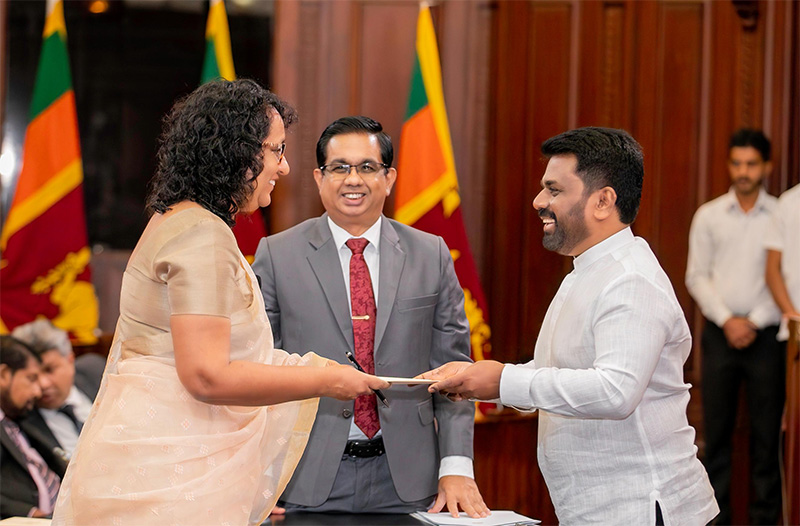
* One-time LTTE mouthpiece TNA is no more
* N & E Tamil speaking representation enhanced
* Fresh look at Sarath Fonseka’s performance at 2010 Prez poll in North required
The new government’s main challenge is ensuring the full implementation of the IMF-led post-Aragalaya economic recovery in line with the Economic Transformation Bill approved by the previous government without a vote. Whatever the side-shows, the focus not only of the government but the Parliament should be on preparing the country to resume debt repayment in 2028 or be ready to face the consequences.
By Shamindra Ferdinando
In a way it was a great thing for the country that the National People’s Power (NPP) scored an emphatic victory at the Nov. 14 general election. Now the Janatha Vimukthi Peramuna (JVP)-led NPPers can have no excuses for not being able to fulfill their promises as would have been the case if the preceding September Presidential election outcome was repeated with the combined Opposition having the lion’s share of the vote, which would have left the country with a virtual hung Parliament of no benefit to anyone other than creating a parliamentary stalemate, leading to fresh political chaos.
We will, however, grant the fact they have a very tall order to fulfill after the previous governments having virtually signed away our sovereignty with the deals they had inked during their tenures.
But we do have a nagging suspicion about someone working in not so mysterious ways against us behind the scene, after what the former US Secretary of State, John Kerry, publicly stated not too long after the defeat of President Mahinda Rajapaksa at the 2015 presidential election when he crowed to the whole world how they had spent several hundred million dollars for regime change operations at the time in several countries, including Sri Lanka. Then we also know since then how a US engineered coup ousted the popularly elected Prime Minister of Pakistan Imran Khan by way of parliamentary and military shenanigans, and then the more publicised way they ousted Prime Minister Sheikh Hasina of Bangladesh and then virtually ruined that country as was the case during the Aragalaya here in 2022 to oust the legally elected President, with a wide mandate, Gotabaya Rajapaksa.
The NPP has accomplished the impossible, even in the North, in the form of securing the Jaffna electoral district at the recently concluded parliamentary election. The NPP obtained three seats, nothing but a historic watershed.
The ruling party also won the Vanni electoral district, the scene of some of the bloodiest fighting during the Eelam War IV (Aug 2006-May 2009). Securing Jaffna and Vanni consisting of Vavuniya, Kilinochchi and Mullaitivu administrative districts, is as difficult as eradicating the conventional fighting capability of the Liberation Tigers of Tamil Eelam (LTTE). The NPP won two seats in the Vanni.
The final phase of the ground offensive was conducted in a corner of the Vanni electorate where LTTE leader Velupillai Prabhakaran met his maker.
The NPP secured two seats in Trincomalee and one in the Batticaloa districts, whereas Digamadulla gave President Anura Kumara Dissanayake’s party four more seats. Altogether 12 out of 29 parliamentary seats available in the five above-mentioned electoral districts ended up with the NPP.
The NPP delivered the stunning blow to those who still pursued separatist agenda, regardless of the LTTE’s demise over 15 years ago. The combined armed forces brought the war to a successful conclusion in May 2009.
The Illankai Tamil Arasu Kadchi (ITAK)-led Tamil National Alliance (TNA) that dominated the Northern and Eastern provinces since 2001 hadn’t been in the fray at the 2024 general election. The TNA that had been in the grip of the LTTE, during 2004-2009, disintegrated 15 years after the end of war, with the ITAK unceremoniously ending the partnership. Ex-TNA members, EPRLF, TELO and PLOTE contested the general election under the ticket of Democratic Tamil National Alliance (DTNA).
The ITAK obtained seven seats (Batticaloa three, Jaffna one, Vanni one, Digamadulla one, Trincomalee one) whereas DTNA won just one (Vanni one). It would be pertinent to mention that ITAK and DTNA fielded a common list for the Trincomalee district to ensure a split in the Tamil vote wouldn’t cost the community much valued representation therein. ITAK Trincomalee leader Kathiravelu Shanmugam Kugathasan, who replaced R. Sampanthan in Parliament at the last Parliament, won that seat.
In addition to the seven elected, the ITAK that contested under the ‘House’ symbol won one National List slot. Ahila Ilankai Tamil Congress (AITC) was the only other party to secure a seat (Jaffna/ Gajendrakumar Ponnambalam) while Independent Group 17 (Jaffna/ Ramanathan Archuna) won one. Altogether Tamil political parties obtained 11 seats, one less than the NPP.
M.A. Sumanthiran (ITAK/Jaffna), Dharmalingham Siddharthan (DTNA/Jaffna) and Sashikala Nadarajah (DTNA/Jaffna), widow of slain ITAK MP Nadarajah Raviraj were some of the big losers. In the east, one-time Chief Minister of the Eastern Province Sivanesathurai Chandrakanthan alias Pilleyan, formerly of the LTTE, failed to retain his Batticaloa district seat. Former LTTE field commander and ex-lawmaker Vinayagamoorthy Muralitharan aka Karuna Amman made an unsuccessful bid to re-enter Parliament also from the Batticaloa district.
In the previous Parliament, there had been 16 MPs representing five Tamil political parties (ITAK, AITC Eelam People’s Democratic Party [EPDP], Tamil Makkal Viduthalai Pulikal [TMVP] and Tamil Makkal Thesiya Kuttani [TMTK]. Last week’s poll eliminated EPDP, TMVP and TMTK while new entrant NPP created political history by winning 11 seats.
In spite of the humiliating setback suffered by those who had been previously in Parliament, the NPP tally has increased the total strength of the Tamil-speaking group representing N & E in Parliament. Perhaps, the successful formation of NPP’s Tamil-speaking wing may influence other political parties to re-examine their overall political strategy. They may not have any other alternative as failure to do so can further weaken their position at the forthcoming Provincial Council and Local Government polls. PC and LG polls are expected to be held next year.
Shanakiyan Rasamanickam, who re-entered Parliament with a convincing win in Batticaloa, consolidated his position, within the party and the district, due to ITAK’s admirable performance there. If not for three Batticaloa seats, ITAK aka Federal Party would have been in an utterly embarrassing position. Batticaloa electoral district is the only one that the NPP couldn’t win. Therefore, the outspoken Rasamanickam can be really happy to have thwarted the NPP in the eastern district.
Now to bury the hatchet between the two or, more correctly, the three literally warring communities here, NPP will have to think out of the box to find a solution that may be by way of sharing power at the centre rather than the periphery, as was successfully done under the Donoughmore Constitution.
Accountability issues
At the presidential election held in Sept. the NPP couldn’t win at least one electorate in the North but did so well several weeks later, it could win Jaffna and Vanni electorates. If not for that sterling performance, the NPP couldn’t have secured an unprecedented 2/3 majority. President AKD should be ever grateful to the northern and eastern electorates for facilitating a 2/3 majority.
Since the introduction of the proportional representation at the 1989 Parliamentary election, no party succeeded in securing a 2/3 though many alleged the Rajapaksas abused such huge mandates. They were, of course, referring to the UPFA securing 144 seats and 145 seats at the 2010 and 2020 general elections, respectively. For a simple majority, the winning party needs 113 seats while 2/3 means 150 seats.
Against the backdrop of NPP’s victory in the N & E, the new Parliament should review Sri Lanka’s response to post-war accountability issues. Since the eradication of the LTTE, the TNA propagated politically motivated unsubstantiated war crimes allegations, both here and abroad. Finally, the treacherous Yahapalana government (2015-2019) betrayed the war-winning armed forces at the Geneva-based United Nations Human Rights Council (UNHRC) in Oct 2015. The accountability resolution that had been co-sponsored by the US-led grouping and Sri Lanka was meant to pave the way for a new Constitution aimed at doing away with the country’s unitary status.
Interestingly, the war-winning Army Commander, Sarath Fonseka, who had been promoted to the rank of Field Marshal, in March 2015, served in that Yahapalana Cabinet, chaired by President Maithripala Sirisena. The role played by the then Premier Ranil Wickremesinghe and the late Foreign Minister Mangala Samaraweera in that despicable act is in the public domain. The failure on the part of Fonseka, who served President Sirisena’s Cabinet to vigorously oppose the government move is still a mystery.
The writer repeatedly discussed the failure on the part of Parliament and urged concerned political parties to raise the Yahapalana-TNA Geneva operation after the same lot fielded Fonseka as the common presidential candidate in 2010. Although Fonseka lost the contest by a massive 1.8 mn votes to war-winning President Mahinda Rajapaksa, he handsomely won the Jaffna, Vanni, Trincomalee, Batticaloa and Digamadulla electoral districts at the same election.
The NPP’s excellent showing in the N & E at the recently concluded general election should be examined taking Fonseka winning the former war zones 14 years ago.
Having alleged Fonseka’s Army of war crimes throughout the northern campaign, the TNA had no qualms in backing the Sinha Regiment veteran. Unfortunately, political parties represented in Parliament never bothered to raise TNA’s duplicity. Instead, all of them shamelessly and brazenly played politics with the issue, seeking petty political advantage at the expense of the armed forces. There hadn’t been a single instance of a war-winning country betraying its armed forces hitherto anywhere in the world. It was only the Maithripala Sirisena/Ranil Wickremesinghe govt. that achieved that dastardly act.
The JVP, though being not part of the Yahapalana Cabinet, never opposed the government’s move against the armed forces. However, the NPP’s victory in the North, perhaps would give an opportunity for President AKD, who is also the Defence Minister and Commander-in-Chief of the armed forces, to address the issue at hand afresh. President AKD retained the Defence portfolio when the new Cabinet of Ministers was sworn in last Monday.
The developing situation in the North may help post-war national reconciliation efforts. Successive governments deliberately allowed further deterioration of relations between the two communities by not taking apt remedial measures. Those who propagated lies were allowed to do so much to the disappointment of the armed forces. Parliament turned a blind eye even when the US and Australia et al denied visas to retired and serving officers and US imposed travel ban on the then Army Commander Gen. Shavendra Silva, the incumbent Chief of Defence Staff (CDS). Maj. General Chagie Gallage, now retired, is another victim of external reprisals.
Maaveerar Naal (Great Heroes’ day)
The Tamil Diaspora must have been quite surprised by the outcome of the general election. Some interested parties played down the importance of NPP victory in the North on the basis of low turnout of voters. It would be interesting to observe how the Diaspora and political parties here mark this year’s Maaveerar Naal. Commencing 1991, the LTTE used to celebrate Nov. 21-27 week as Great Heroes Week. During the period the group wielded power, the weeklong celebrations and activities received even international media attention.
This year, Maaveerar week is scheduled to commence on Nov 21 (tomorrow), the day the 10th Parliament meets. What would those elected from the NPP, ITAK and other parties do this year? Would interested parties seek to cause some unnecessary commotion in a bid to embarrass the government. Let us hope the government would handle the situation cautiously as opportunistic elements on both sides seek to exploit the developments. ITAK’s Sivagnanam Shritharan paid tribute to fallen Maaveerar at Kanagapuram, Kilinochchi.
The NPP’s unexpected victory in the north may compel not only Tamil Diaspora but Western countries, particularly Canada, to review their position.
Canada declared May 18 as Tamil Genocide Remembrance Day as Premier Justin Trudeau’s government sought to appease Canadian voters of Sri Lankan origin. Canada cannot under any circumstances ignore the Tamil vote received by the NPP as people discarded unsubstantiated war crimes allegations directed at the government, for the second time. Had the northern electorate believed the Army wantonly killed civilians on the Vanni east front in 2009, as alleged by the UN, they wouldn’t have voted for Fonseka. Perhaps, the people wanted the government to bring the war to an end at any cost. Having waged two terror campaigns in 1971 and 1987-1990, the JVP should be able to comprehend the need and the responsibility on the part of the government of the day to take whatever measures necessary to deal with the challenge.
The NPP was formed in 2019 just months ahead of the presidential election as the JVP realized it couldn’t push ahead on its own but needed wider public support. The NPP achieved that with ease within six years.
In August 2006, the then President Mahinda Rajapaksa went ahead with an-all-out campaign against the LTTE after failing to convince them to negotiate for a final settlement. President Rajapaksa had no option but to go on the offensive after the failed LTTE assassination attempts on the then Army Commander Lt. Gen. Fonseka (April 2006) and then Defence Secretary Gotabaya Rajapaksa (Oct. 2006). The TNA remained committed to the LTTE’s murderous cause until the very end.
A matter for serious concern
An unbelievably large number of voters skipped the general election. All political parties, including the NPP, should be concerned over the unprecedented deterioration of voter interest, especially after a thrilling presidential election brought AKD to power just six weeks ago. A substantial increase for the NPP from 5,634,915 votes (42.31 %) at the presidential to 6,863,186 (61.56%) at the general election just weeks later shouldn’t be allowed to divert attention to the massive drop in public interest. Well over half a million rejected votes, too, must worry all.
The NPP won 159 seats, including 18 National List slots, nine more than required for a 2/3 majority. At the presidential election 3,520,438 voters refrained from exercising their franchise. But that figure increased to 5,325,108 at the general election while the number of rejected votes, too, recorded a significant increase. According to the Election Commission, at the presidential poll, the number of rejected votes was 300,300 while the general election recorded 667,240 rejected votes.
What really caused such an increase in the number of rejected votes was when the number of polled votes dropped from 13,619,916 votes (79.46%) to 11,815,246 (68.93%)? In other words of the 17,140,354 people eligible to vote, a staggering percentage decided not to. Voter apathy is not healthy. Not healthy at all.
A rethinking on the part of the SJB and New Democratic Front (NDF/consisted of former SLPP lawmakers and UNP) is necessary as they couldn’t at least retain the number of votes received at the presidential election. SJB that polled 4,363,035 votes (32.76 %) at the presidential poll could muster only 1,968,716 (17.66%) at the general election, while NDF could secure 500,835 (4.49%) having polled 2,299,767 (17.27%) just weeks ago. The SJB and NDF ended up with 40 seats (including five NL slots) and five seats (including 2two NL slots) while the SLPP that won 145 seats at the 2020 general election had to be satisfied with three seats, including one NL slot.
Both Sajith Premadasa and Ranil Wickremesinghe should seek remedial measures before the EC announced PC and LG polls. Perhaps, divided groups have to unite under one banner either under SJB or UNP or face annihilation at the PC and LG polls. For Premadasa and Wickremesinghe time seemed to have run out.
The SLPP obtained 350,429 votes (3.14%) at the general election up from 342,781 (2.57 %) at the presidential election. For the SLPP a rapid recovery process will never be possible as its only NL member and leader of the minute group Namal Rajapaksa is likely to be the target of corruption investigations. The SLPP group consists of Namal Rajapaksa, newcomer Chanaka Sampath (Galle) and D.V. Chanaka (Hambantota).
Fifteen political parties represented the last Parliament. They were SLPP (145), SJB (54), ITAK (10), NPP (03), EPDP (02), AITC (02), TMVP (01), SLFP (01), MNA (01), TMTK (01) TMTK, ACMC (01), NC (01), SLMC (01), UNP (01) and OPPP (01). The new Parliament will be represented by 13 political parties and one independent group – namely NPP 159, SJB 40, ITAK 08, NDF 05, SLPP 03, SLMC 03, Sarvajana Balaya (NL), UNP (01), DTNA (01), ACTC (01), ACMC (01), Jaffna Ind. Group 157 (01) and SLLP (01).
Midweek Review
‘Ramayanizing’ Sri Lanka by Courtesy of SriLankan Airlines

 (The author is on X as @sasmester)
(The author is on X as @sasmester)
SriLankan Airlines’ five-minute commercial promoting the so-called ‘Ramayana Trail’ in Sri Lanka is being accepted very naively as an enticing and heartwarming advertisement by Sri Lankan and Indian viewers across social media. Predictably, the video has also gone viral. It shows a young child being educated about aspects of the Ramayana legend by his grandmother, while zooming in on locations in Sri Lanka where local mythology has made associations with some narratives of the Ramayana. Beyond the rave reviews of the commercial in Sri Lanka and India, an astute observer would in fact see it as a very problematic rendition for one simple reason. That is, when viewed from the perspective that it is paid for by SriLankan Airlines, a government entity funded by local taxpayers, what is said and promoted, in effect, would be through the voice of the state and the government. Therefore, for instance, when the granny tells the child, “all the places in Ramayana are real. Today, we know Lanka as Sri Lanka”, in one careless and ill-thought-out fell swoop, SriLankan Airlines has given credence to belief as evidence, myth as history, fiction as fact, asserting Ramayana’s Lanka as present-day Sri Lanka when numerous Indian renditions of the story locate parts of Ravana’s Lanka well within contemporary India.
Admittedly, the commercial will certainly attract Indian tourists and pilgrims, particularly from the northern parts of the country. The question that comes to mind however is whether this is the only way to promote the trail? Many of my friends have already made the trip without the nudging of the new advert. The advert also begs the question, whether local sensitivities and cultural meanings linked to the Sanskrit epic were ever considered when it was conceptualised, or at any point even after in the process. More importantly, who gave the final seal of approval?
The hegemonic narrative in the commercial is what one might call a ‘North Indian Brahminic’ approach to the Ramayana, which erases other versions of the epic including the Ravana-centric myths in Sri Lanka itself. Unfortunately, it is this hegemonic narrative that has been making the rounds for some time in India with Rama as its protagonist and Ravana as the absolute villain, the all-evil-encompassing antagonist. In this rendition, it is no longer simply an ancient epic or a story of innocence and faith, but a contemporary political narrative with considerable cultural power, authority and reach, performed and used by the state itself. This narrative feeds directly and indirectly into the somewhat imperialist designs of certain contemporary Indian political forces so aptly encapsulated in the hegemonic political concept of Akhand Bharat. However, in real life, understandings of the Ramayana have never been this simple or linear.
The title of Prof A.K. Ramanujan’s seminal essay, ‘Three Hundred Ramayanas: Five Examples and Three Thoughts on Translation’ offers a clear indication into the many versions of the Ramayana and the complex narrative traditions of both India and lands beyond where aspects of the epic have become part of local myths, folktales or performance traditions. Interestingly, Prof Ramanujan’s essay was dropped from the Bachelor of Arts in History (Honours) degree programme at Delhi University in 2011 amidst considerable agitations lead by Akhil Bharatiya Vidyarthi Parishad, a right-wing students’ organization, precisely because its contents complicate the way in which the political narrative that is the Ramayana today is presented.
It is truly unfortunate that the narrative given prominence in the Sri Lankan Airlines advert stems from this dominant, parochialized and utterly politicized version of the Ramayana which sweepingly demonizes Ravana. This broad-brush demonization reaches its peak in India during Dussehra, the festival during which effigies of Ravana are burnt to symbolize the vanquishing of evil (Ravana) by good (Rama). However, interestingly, in many of India’s tribal areas, the narrative is closer to that in Sri Lanka, where Ravana is seen as a hero, and importantly as a source of knowledge and ethics. In 2017, in the Katol area in the State of Maharashtra, tribal people forced the local administration to stop the burning of Ravana effigies during Dussehra. In Nashik, also in Maharashtra, tribal folklore suggests that the area was part of Ravana’s kingdom and was governed by his sister Surpanakha along with her husband. This understanding of Ravana’s kingdom is nowhere near Sri Lanka as promoted by SriLankan Airlines. In some tribal Gond villages in Maharashtra, Ravana is worshiped as a god, clearly evident during Dussehra. He is also worshiped in many other locations including, Mandsaur and Ravangram in Madhya Pradesh; Bisrakh in Uttar Pradesh; Kangra in Himachal Pradesh; Mandya and Kolar in Karnataka, and Jodhpur in Rajasthan. Similar practices are seen in the tribal areas of Chhattisgarh, Jharkhand and West Bengal as well.
In Tamil Nadu in India’s south, there are many people who align themselves with ‘Dravidian’ ideologies, promoting Ravana as a politico-cultural icon. One source of motivation for this stems from the manner in which Ravana is eulogised for his valour in Kambaramayanam – the Tamil version of the Ramayana – even though here, too, the main premise of the hegemonic account is maintained. The more obvious source for this reverence is Ravana Kaaviyam written by Pulavar Kuzhandhai and published in 1946. It is a 20th century attempt to deconstruct the Ramayana based on the argument that the mainstream Ramayana was an attempt to establish the supremacy of the ‘Aryan race’ who lived in northern India, over the ‘Dravidians’ in the south. Here, Ravana is seen as a ‘Dravidian’ king, and in essence very similar to the Sinhala renditions of Ravana. In both these popular Sinhala and Tamil versions, he is presented as a noble king, epitomising justice, courage and compassion, and also a wise person and scholar. While categories such as ‘Dravidian’ and ‘Aryan’ as ethno-cultural references as opposed to linguistic references are not part of my academic vocabulary, the attempted deconstruction is nevertheless interesting as it also offers a glimpse into the manner in which 20th and 21st century hegemonic North Indian politics are understood by some sections in the country’s south.
What is evident is that a counterculture movement is currently mobilising tribal and Dalit communities in several Indian states such as the above to vindicate Ravana and ‘rescue’ him from the negative light in which he has been portrayed in the current dominant version of the Ramayana, the one SriLankan Airlines has blindly based their commercial on. Due to this blindness, these interesting and telling complexities and intriguing political and cultural references have no resonance whatsoever in the SriLankan Airlines advert.
I come again to the question posed at the beginning of this essay: is this the only way to do such a promotion funded by the Sri Lankan government? Cannot the state-funded national carrier attract Indian tourists and pilgrims by presenting the places the local tourism industry and Indian tour and pilgrimage operators want these travellers to visit by offering the local interpretation? After all, Sri Lanka does not have a performance tradition of the Ramayana and hardly any concrete memories of the epic and its numerous episodes as a specific text. Instead, fragments of these exist scattered on the landscape throughout the island as places where specific incidents related to the Ramayana had supposedly happened. These manifest through several local folk tales and myths where Ravana is ever present as a local hero and Rama is virtually absent except when contextually required. Moreover, some of these places refer to many other stories too, which have been historically more prominent locally than the Ramayana-related narratives. However, right now, the Ramayana ‘stories’ are given considerable local and national prominence as a rational economic decision taken by people in these areas in the interest of tourism which translates into simple commercial gain. This is understandable.
The question is, what prevented SriLankan Airlines from beginning its advert with the famed flying machine of Ravana known in Sinhala as dandu monaraya (and in India as Pushpaka Viman), often referred to in influential local interpretations as the first of its kind, and predating the Wright Brothers’ invention? Is it a lamentable lack of imagination and creativity, or sheer ignorance? After all, the logo of Air Lanka, the predecessor to SriLankan Airlines, found its genesis in this story, which continues to date in a different form. This way, potential tourists could have been shown the same locations referred to in the current advert, but viewed from the sky, as if one were flying in the dandu monaraya like Ravana may have done in mythical times. This would also be very similar to the way ancient Sri Lankan poets of the sandesha tradition described local landscapes and built environments from the point of view of a bird in flight taking a message to a king, a Buddhist monk or some other such personality. Salalihini Sandeshaya and Hansa Sandeshaya written in the 15th century during the Kotte Period come to mind.
In this manner, the core places in the ‘Ramayana Trail’ could have been flagged for tourist and pilgrim interest while maintaining a distinct sense of local culture and identity that SriLankan Airlines should ideally be marketing. This is not to make Indian tourists and pilgrims cast aside their own beliefs, narratives and interpretations when visiting Sri Lanka. That is their right and not in any doubt. The crux of the matter is, why would SriLankan Airlines be so north Indian and Brahminic, and willingly succumb to the dominant and exclusivist version of the Ramayana promoted by the Indian state and many ordinary people to the exclusion of all other narratives in India itself? By doing so, SriLankan Airlines is taking itself, the government, the state and by extension all of us Sri Lankans, right into the bosom of the Indian state’s cultural and political colonialism typified by the concept of ‘Akhand Bharat’ as noted earlier. If picked up by opposition forces in the politically polarised Sri Lankan society, the advertisement can become a political statement, which has the potential to create needless rifts within Sri Lanka itself.
But then again, one cannot expect these complexities to be understood by the decision makers at SriLankan Airlines who obviously are far removed from the local cultural terrain as well as existing cultural hegemonism emanating from across the Palk Strait. The national carrier, in its haste to soar, as well as absence of foresight and lack of enlightenment of local culture has imprisoned Sri Lanka in a hegemonic North Indian politico-cultural narrative. This is also a sign of lacking national pride despite constant and oftentimes annoying rhetoric. One can only hope, the Sri Lankan government will revisit how this was done in the first place and ensure this kind of culturally crude reductionism of our own traditions and folklore does not take place in the future in state-sponsored activities carried out with public funds.
I cannot but be reminded of a quote by Voltaire when reflecting on the manner in which politics of this kind flow, emerge, and reemerge in Sri Lanka while nothing is ever learned: “It is difficult to free fools from the chains they revere.”
Midweek Review
Lone Voice of Reason
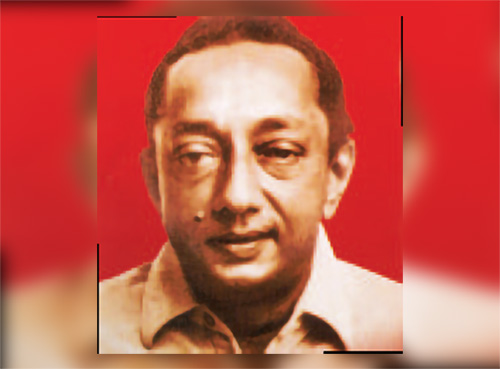
By Lynn Ockersz
There’s this ‘narrative’,
In the ‘Isle of Smug Smiles’,
That the time’s ripe,
To craft the epitaph,
Of the political opposition,
Now that the restive House,
By the idyllic waterway,
Is in the grip of a single party,
In all too familiar history,
But there’s a glowing example,
From the distant eighties,
When Sarath Muththetuwegama,
Lone Member of the CPSL,
Won the admiration of the country,
Through his inspiring speeches,
Clinching the timeless point,
That Quality is superior to Quantity.
-
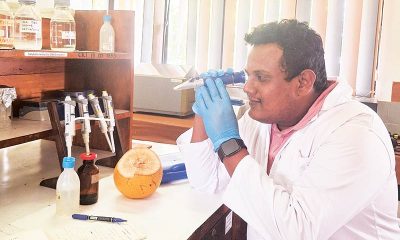
 Life style6 days ago
Life style6 days agoKing of coconuts heads for a golden future
-
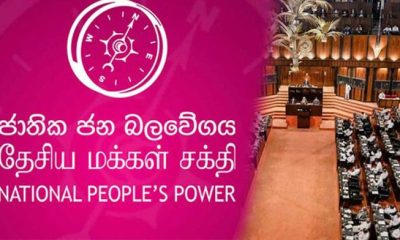
 News5 days ago
News5 days agoNPP appoints two defeated candidates as NL MPs
-
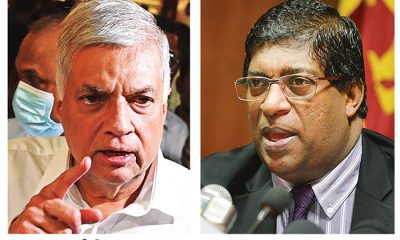
 News4 days ago
News4 days ago‘Gas Cylinder’ explodes; Ranil flays NDF Secy. for submitting Ravi’s name
-
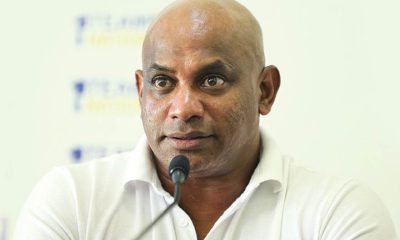
 Sports1 day ago
Sports1 day agoPathum will become world’s best batter, says Jayasuriya
-

 Midweek Review3 days ago
Midweek Review3 days ago‘Ramayanizing’ Sri Lanka by Courtesy of SriLankan Airlines
-
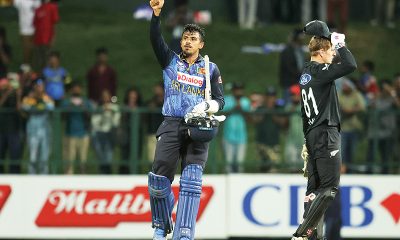
 Sports4 days ago
Sports4 days agoMaking batting compulsory for bowlers has worked – Theekshana
-

 Sports2 days ago
Sports2 days agoSri Lanka’s cricket revival continues
-

 Editorial6 days ago
Editorial6 days ago‘Twas a great victory











